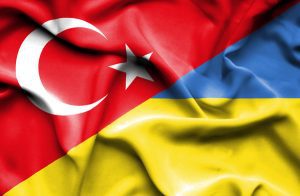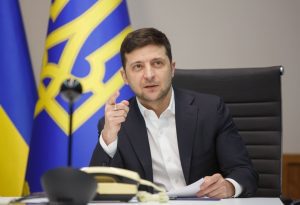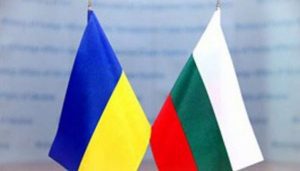
Ukraine and Turkey intend to prepare a Free Trade Area (FTA) agreement for the meeting of the High Level Strategic Council of Ukraine and Turkey in 2020, Foreign Minister of Ukraine Dmytro Kuleba has said. “We are really determined to hold the next meeting of the Strategic Council of our presidents this year and want to fill it with maximum content. And, of course, the FTA agreement is one of those tasks that should already be consecrated by our leaders,” Kuleba said after a joint meeting with Turkish Foreign Minister at a press conference in Antalya on Friday.
The foreign minister said that at the moment Ukraine is waiting for a certain positional document from the Turkish side in order to continue consultations on this issue.
“Of course, the potential of our trade is phenomenal. I can sincerely tell you that Turkish goods can be found in any store of any region of Ukraine… Unfortunately, Ukrainian goods are not yet represented on the Turkish market, but we also have a lot of things, what Turkish consumers and buyers will benefit from. And we can open this potential, achieve a fair and mutually beneficial balance in trade, and bring our trade to a new horizon by signing the FTA agreement. And today, my colleague and I agreed that we will apply maximum efforts in order to positively resolve this issue,” the Ukrainian minister said.
According to him, Ukrainian and Turkish experts involved in trade will continue negotiations on this issue, but political leaders, ministers of foreign affairs and trade of both countries will be ready to take part in them to settle the issues that will seem insoluble at the expert level.
“There is political will of both sides now to resolve all issues and reach a result, I emphasize, in the interests of business and economies, both Ukrainian and Turkish,” Kuleba added.

The coronavirus disease (COVID-19) pandemic seriously affected the trade between Ukraine and Belarus, and in the first five months of this year, trade between the countries amounted to $1.675 billion, a decrease of 22.8% compared to the same period last year, Belarussian Ambassador to Ukraine Igor Sokol has said. “I would like the turnover to be bigger, but the situation associated with the COVID-19 pandemic is a circumstance that does not depend on you or on us, and it seriously affected the turnover between Ukraine and Belarus. In the first five months of this year, our turnover amounted to $1.675 billion. Belarus exported to Ukraine [goods worth] $1.078 billion, and Ukraine exported to Belarus – $597 million. According to our statistics, compared with the same period last year, there is a decrease in trade by 22.8%,” he said in an interview with Interfax-Ukraine.
According to the ambassador, personal contacts and logistics were interrupted.
“I have to say that Ukraine’s use of restrictive measures in relation to our products (cement, gas concrete block) also had a negative impact on the volume of mutual trade,” Sokol said.
The diplomat said that Ukraine is a significant, strategic trade and economic partner for Belarus.
“Ukraine is now in second place, but God willing that someday it will become our first trade and economic partner. Among Ukraine’s trade partners, Belarus is fourth along with such developed and economically strong states as Germanyвз. That says a lot,” he added.
Sokol also recalled that the Ukrainian-Belarusian trade is estimated in billions of U.S. dollars, and over the past year amounted to $5.8 billion.
“Now the task in the mutual trade turnover of our countries is to restore those positions that existed before the pandemic, to preserve everything that was о up in previous years,” he said.
At the same time, the ambassador said that Ukraine and Belarus did not stop working on the bilateral trade and economic track, even during the pandemic.
“Of course, at the initial stage in March-April, diplomats did not go anywhere, but gradually the work comes to life both in our country and in Ukraine. Our workers, who are involved in various projects in Ukraine, come to your country, our equipment arrives. Yesterday I was in Zhytomyr and participated in the transfer of five new trolleybuses for the city. Last week I participated in the launch of trolleybuses manufactured jointly by Ukraine and Belarus for Kryvy Rih,” he said.

The bus operator FlixBus (Germany) will resume operations in Ukraine on separate international routes from June 25.
According to the company’s press service, tickets are already on sale for trips from Kyiv via Zhytomyr, Rivne, Lviv, Uzhgorod to Krakow, Budapest, Vienna and more than a dozen German cities, and from July 3 green branded buses will travel from Odesa via Vinnytsia, Khmelnytsky and Ternopil to Plzen through Prague.
“So far we have renewed part of our routes from Ukraine, but we plan to gradually restore them all. Closing the borders has become a challenge for the entire industry of international transportation, but even taking into account severe restrictions on the borders with the EU countries that exist now, we see a demand for trips to the countries of Europe. First of all, these are Poland, Germany and the Czech Republic,” the press service said citing director of FlixBus in Ukraine and Poland Michal Leman.

Ukrainian Foreign Minister Dmytro Kuleba and Bulgarian Deputy Prime Minister for Judicial Reform, Foreign Minister Ekaterina Zakharieva agreed to step up bilateral cooperation, the Ukrainian Foreign Ministry said.
“The two focused on urgent issues of the development of Ukrainian-Bulgarian relations in the political, economic and consular spheres, as well as the problems of protecting national minorities,” the Ukrainian Foreign Ministry said on its website on Tuesday.
Kuleba and Zakharieva also discussed measures taken by the governments of both countries to counter the spread of coronavirus. The Minister of Foreign Affairs of Ukraine thanked the Bulgarian counterpart for the decision made by the Bulgarian government to provide humanitarian assistance to Ukraine in the form of protective equipment for Ukrainian doctors.
The foreign ministers exchanged invitations to pay bilateral visits.

Ukraine and Spain will continue working together to conclude an agreement on a common aviation space. The issue of creating additional travel opportunities for citizens was discussed during a telephone conversation between Minister of Foreign Affairs of Ukraine Dmytro Kuleba and Minister of Foreign Affairs, the European Union and Cooperation of Spain Arancha Gonzalez Laya.
“The Foreign Ministry of Ukraine has consistently advocated for Ukrainians’ opportunities to travel freely around Europe and the world. We are working hard to create new opportunities for air travel between Ukraine and the EU countries. The agreement on a joint aviation space just creates such opportunities. We will do everything to conclude this agreement,” Kuleba said, the press service of the Ukrainian Foreign Ministry reported.
Both sides stated that the conclusion of the Agreement on the common aviation space meets mutually beneficial interests and will contribute to the intensification of business, tourist and interpersonal contacts.
The ministers also discussed the importance of enhancing bilateral economic and investment cooperation. It is noted that the creation of additional business opportunities will be facilitated by the signing of the Convention on Avoiding Double Taxation between Ukraine and Spain.
The parties also exchanged information on measures taken by the governments of both countries to counter the spread of COVID-19. Kuleba thanked the Spanish government for the assistance in returning Ukrainian citizens home.
Arancha Gonzalez Laya, in turn, confirmed the invariable position of Spain in the matter of protecting the sovereignty and territorial integrity of Ukraine.

The duty of 65% on coal imported from the Russian Federation to Ukraine with some exceptions is imposed from April 15, 2020, according to government resolution No. 261 dated March 18.
The exception is anthracite coal, bituminous coal and coking coal for metal industry, as well as lean coal for companies generating electricity and heat.
The imposition of the duty on imported electricity earlier announced at the government meeting is not envisaged in the document.